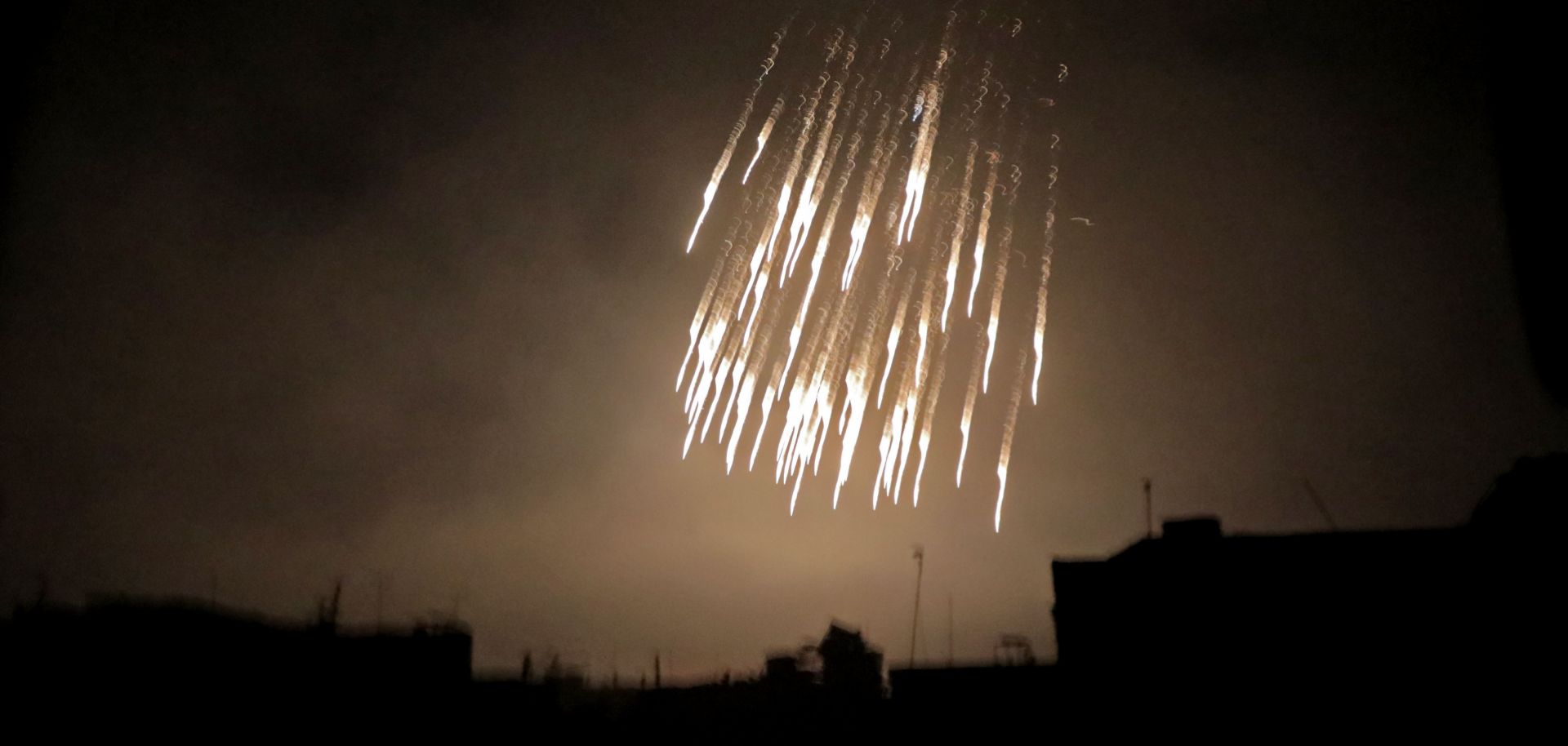GUIDANCE
The Signs, Options and Risks of a U.S. Strike on Syria
Apr 10, 2018 | 23:58 GMT

A photograph taken during a March 23, 2018, bombardment in the rebel-held town of Douma, in eastern Ghouta outside Damascus.
(HAMZA AL-AJWEH/AFP/Getty Images)
Highlights
- The United States is building a military coalition to deter Syria's use of chemical weapons.
- This coalition may conduct a broader operation with a bigger target list than the U.S. strikes conducted in April 2017, but it would not be intended to change the civil war's frontlines.
- Like 2017's strikes, any potential operation will try to avoid Russian casualties and mitigate risk of further political escalation for the coalition.
Subscribe Now
SubscribeAlready have an account?
